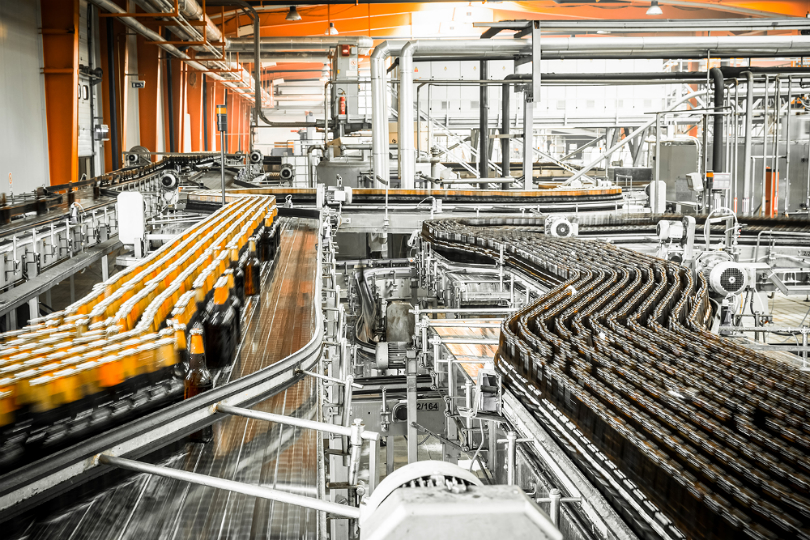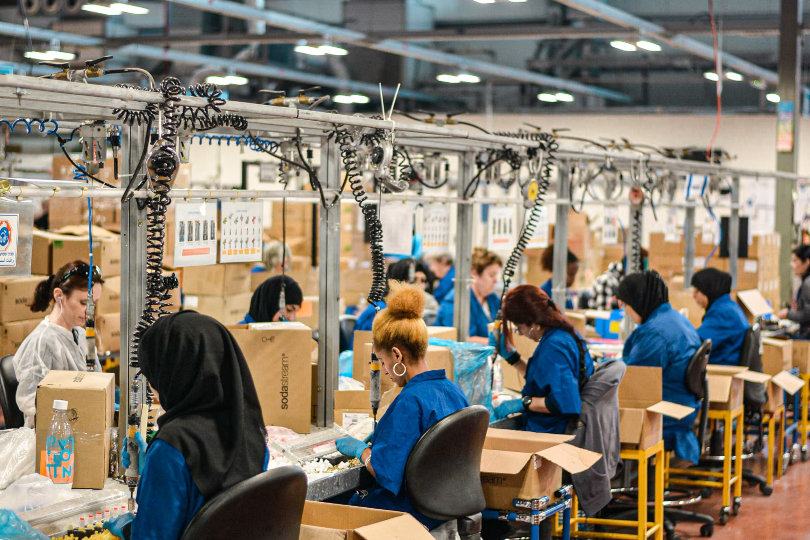Lean manufacturing is a term popularized by Toyota Production System which emphasizes the elimination of waste within a system of manufacturing. This management philosophy addresses various types of waste (called “Muda” in Japanese) which are an impediment to growth and productivity. Lean manufacturing aims to increase revenue and reduce cost of production through efficiency and a holistic integration of different production stages.
The lean manufacturing ideology considers seven categories of waste which should be eliminated. These wastes are overproduction, motion, inventory, over-processing, defects, transport and waiting. Continue reading to explore each type of waste in detail.

Waste of Overproduction
The most concerning of all wastes is overproduction. When you produce more than the aimed amount it leads to all kinds of wastes, from inventory to consumer. Overproduction results in procuring more resources than necessary. To turn them into finished goods, you need to burn more energy, leading to more pollution. Overproduced goods and products need extra storage which costs more money. Products which are not sold end up hurting the company’s revenues.
It also goes against the idea of green manufacturing, which is sustainable and environmental friendly. Instead, overproduction creates extra waste in all levels of production that not only harms the company but also the environment. It is important to understand how much you need to meet your profit margin. Do not go overboard.
Waste of Motion
Whether you are referring to the motion of machines or humans, waste is waste. Waste of motion can defined as – the extra work (motion) put into a task by a person or machine when lesser amount of work could have achieved the same result. This is a waste of energy and time – some of the most important resources in the world. Wasting of motion has a negative impact on human productivity as it can result in high levels of stress. Eventually, the person might burnout.
When it comes to machines, the natural wear and tear is accelerated when the machines are unnecessarily overworked. In the long run, your company will suffer extra expenses for repairing or replacing them. You may also incur manufacturing plant maintenance. To minimize waste of motion, promote healthier working environments so that the employees remain happy and motivated.
Waste of Inventory
Inventory refers to the company’s stock of raw resources and finished products. When you acquire more inventory than required you contribute to waste. Excess of raw materials which are not used for production deteriorate and become unusable. Throwing them away adds to the accumulating waste clogging our environment.
Extra finished goods which are not supplied to the market are kept in the storage. To prevent them from going bad, companies invest money in maintaining the storage temperature and moisture levels. This is an unnecessary expense for the company. It also wastes energy and adds to pollution.

Waste of Over-Processing
Over-processing is concerned with any unnecessary step in the production process. For example, if you add an extra layer of plastic sheet over the product cover which is not adding any value to it, then you are over-processing. This wastes your resources, finances while adding to the problems of pollution. It also requires extra labor which is wasted on insignificant processes. Prevent this by taking a minimalistic approach. Only add what is important.
Waste of Defects
Defects are products that do not meet the quality standards of performance and customer satisfaction. Such products do not last long, or function poorly, due to which they need to be replaced. This means the company has to produce more to meet the demands.
Defective products will spoil your company’s reputation in the long run. Replacing the same products over a short period adds to the creation of more waste. Manufacturing will require additional energy which adds to pollution.
Waste of Transport
Transport is a necessary evil for a company. It does not add value to the product but is required to carry the product from the factories to the market shelves. Therefore, it is profitable to reduce this cost as much as you can. Find shorter trade routes and roads. Also, invest in advanced transport vehicles which use fuel more efficiently and reduce air pollution.
Waste of Waiting
When one stage in production halts, it affects all the other stages that come before and after it. This is called waste of waiting. If one stage of production consumes a lot more time and effort, then the other stages have to work overtime to meet deadlines. This increases the need for human resource and energy. It causes stress and results in haphazard work.
Your company must predict possible problems and have backup solutions ready. Also, any unexpected problem must be dealt with promptly.







